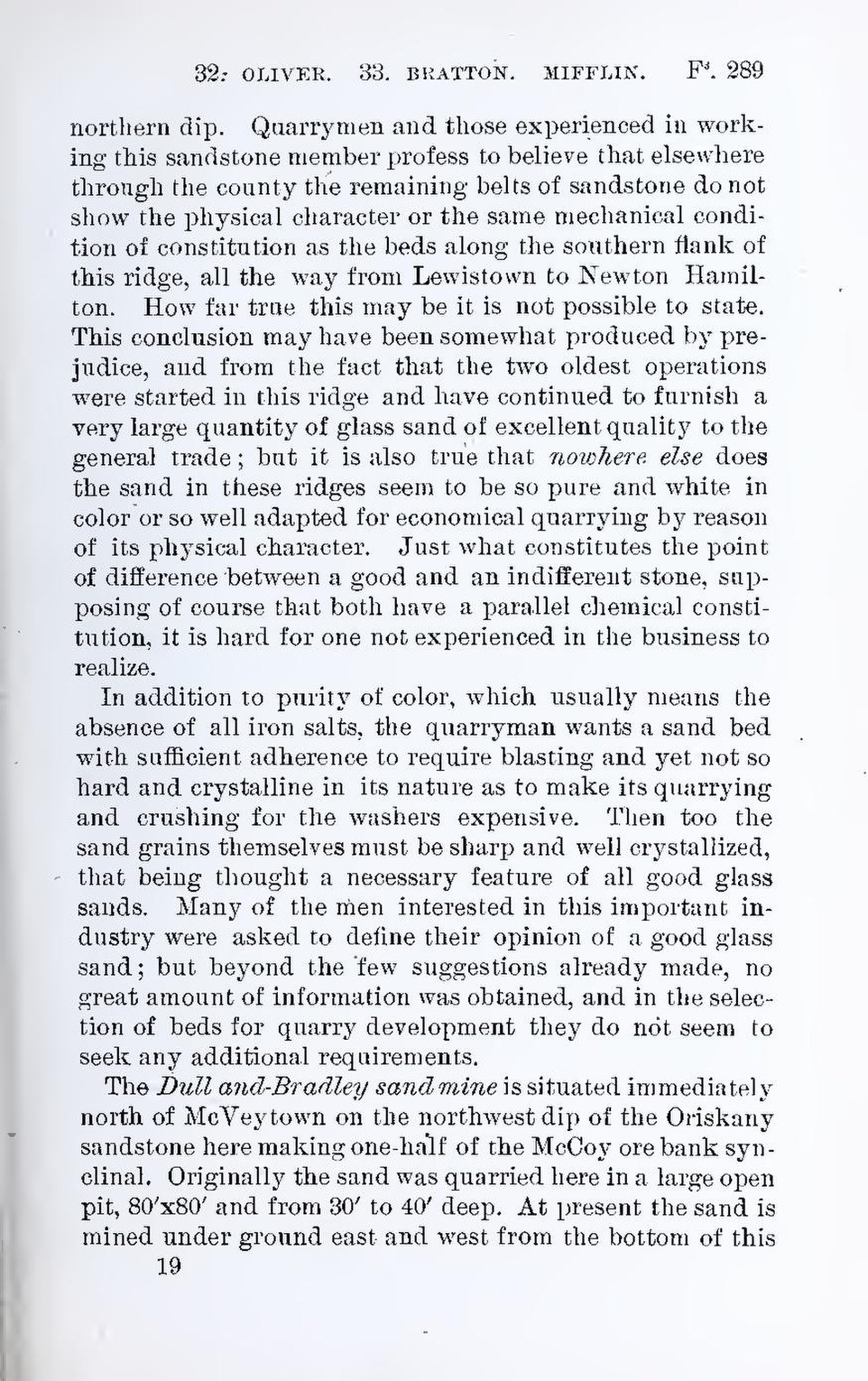northern dip. Quarrymen and those experienced in working this sandstone member profess to believe that elsewhere through the county the remaining belts of sandstone do not show the physical character or the same mechanical condition of constitution as the beds along the southern flank of this ridge, all the way from Lewistown to Newton Hamilton. How far true this may be it is not possible to state. This conclusion may have been somewhat produced by prejudice, and from the fact that the two oldest operations were started in this ridge and have continued to furnish a very large quantity of glass sand of excellent quality to the general trade; but it is also true that nowhere else does the sand in these ridges seem to be so pure and white in color or so well adapted for economical quarrying by reason of its physical character. Just what constitutes the point of difference between a good and an indifferent stone, supposing of course that both have a parallel chemical constitution, it is hard for one not experienced in the business to realize.
In addition to purity of color, which usually means the absence of all iron salts, the quarryman wants a sand bed with sufficient adherence to require blasting and yet not so hard and crystalline in its nature as to make its quarrying and crushing for the washers expensive. Then too the sand grains themselves must be sharp and well crystallized, that being thought a necessary feature of all good glass sands. Many of the men interested in this important industry were asked to define their opinion of a good glass sand; but beyond the few suggestions already made, no great amount of information was obtained, and in the selection of beds for quarry development they do not seem to seek any additional requirements.
The Dull and Bradley sand mine is situated immediately north of McVeytown on the northwest dip of the Oriskany sandstone here making one-half of the McCoy ore bank synclinal, Originally the sand was quarried here in a large open pit, 80′×80′ and from 30′ to 40′ deep. At present the sand is mined under ground east and west from the bottom of this
